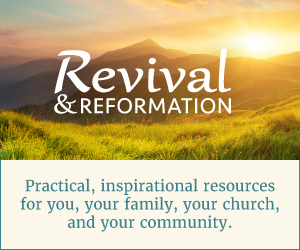George Knight's book, A Search for Identity: The Development of Seventh-day Adventist Beliefs1 is an extremely valuable book for Adventists in general and the Adventist pastor particularly. Perhaps the main reason for such a claim is the fact that Knight's historical work gives us unique insight into who we are as Adventists and a greater awareness of what has gone into making us the people we have become.
One of the most helpful and challenging things about the book is the fact that as Knight sketches the development of the Adventist identity, he exposes, among other things, the reality that Adventists have for much of their history been a people who have seen the basis for their existence from at least two divergent points of view. To overstate it, it is as though there have been two quite antithetical, co-existing Adventisms since relatively early in our history.
This divergence, it seems to me, has virtually always existed among the family of God and has disclosed itself especially during the crisis points of the church's history. The most dramatic of these crises happened during the last week of Jesus' life when the values and outlook of Jesus versus those of the Pharisees (and others) was, by the direction of God, brought into the boldest relief. The significant differences gathering at Golgatha were not merely the Jewish- Roman tension, but the faith of Jesus versus the conservative religion of the Pharisee.
In my mind the particular event in Seventh-day Adventist history that most clearly discloses the same omnipresent and far-reaching difference in essential spiritual orientation is the occasion of what has become known among Adventists as the 1919 Bible Conference. This piece of Adventist history is insightfully evaluated by George Knight in the book mentioned above, and by Paul McGraw in his article, "Without a Living Prophet" published in this issue of Ministry. Stripped to its essentials this council led to the contrasting outlooks we have spoken of, displayed between such key personalities as A.G. Daniells and W. W. Prescott, who were on one side of the issues, while on the other were men such as Claude Holmes and J. S. Washburn.
As it sometimes is these days, the primary presenting issue of the Conference was the nature, use, and authority of the writings of Ellen White. There are distinct characteristics in this theological-ecclesiastical skirmish that are worth contemplating as we seek to identify where we might stand when it comes to the issues and mentalities facing the Seventh-day Adventist Church today.
Although Holmes and Washburn did not think so, Daniells and Prescott held the work of Mrs. White in the highest regard. While attempting to move the Church away from an inerrantist view of Mrs. White's writings and away from placing her published work on a par with the Bible, they sought to retain the deepest respect and authority for the writings in the Church. In seeking this balance, Daniells appeared to Holmes and Washburn to be retreating from what they perceived to be the orthodox position of attributing to Mrs. White's work a kind of verbal perfection and biblical authority in the Church. Holmes represented a view of Mrs. White's writing that had already gained a significant foothold in the Church, and when Daniells said such things as "Sister White never claimed to be... a dogmatic teacher on theology" (see McGraw's article on page 12), Holmes and Washburn saw Daniells to be advocating a course that was dangerous and that would seriously subvert the Church.
All told, Daniells and Prescott represent an outlook that is distinctly biblical in its orientation and clearly reflective of Mrs. White's approach to revealed truth and authority. At its root their approach was centered in the gospel of Christ and in His person and was eager to see the will and work of God go forward strongly. Both in the case of the Christ event itself and in 1919, its over-conservative opponents ever confused and associated it with destructive "liberal" causes and mentalities.
Holmes's and Washburn's orientation was, in contrast to that of Daniells and Prescott, centered more in dogmatic truth and verbal dictum. They seemed to place more emphasis on religion and religious correctness than upon the person and work of Christ and the basic thrust of the biblical message. Their arguments appeared to be centered more upon an all-consuming tradition than upon a living word. The emphasis of their ministry was to identify error almost more than truth and to expose those in the community of faith who were proponents of ideas that were in any way divergent from those they identified as truth.
I personally believe that in 1919 God was attempting to lead the Adventist Church toward openly embracing the Daniells-Prescott orientation. I also believe that our Church would be much more healthy and vibrant today had we followed that leading more fully.
In the light of these things it seems to me that it would be most helpful for us as ministers of the Seventh-day Adventist Church to carefully assess our thinking and the direction of our life and ministry in the light of key identity-forging events such as the 1919 Bible and History Teachers Council.
1 George R. Knight, A Search for Identity. The Development of Seventh-day Adventist Beliefs (Hagerstown, Md.: Review and Herald Pub. Assn., 2000).
2. See Daniell's later work, Christ Our Righteousness.













